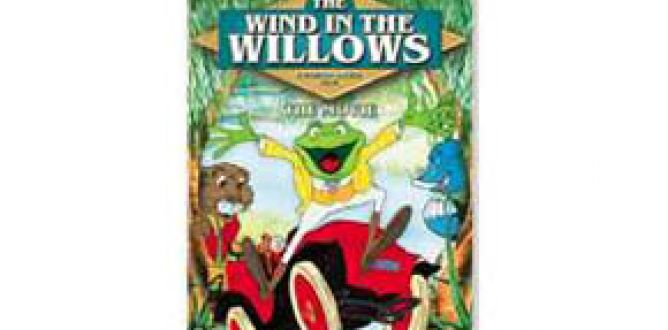Wind in the Willows Parent Guide
Parent Movie Review
When Mole abandons spring-cleaning to enjoy a walk in the fresh air, he unwittingly sets out on a great adventure. Meeting Ratty, an inhabitant of the Riverbank, the underground dweller accepts an offer for a ride in his rowboat. The new pastime is so exciting, Mole decides to stay for a while and learn all about life on the water.
The first order of business is to introduce the bespectacled rodent to some of the neighbors, including the solitary Badger from the Wild Wood, and the well-to-do master of Toad Hall.
It is the latter acquaintance that proves to be all the fuss. Small though he may be, Toad creates some large problems. Known for following flights of fancy, the wealthy gad-about has recently purchased a horse and cart. Enthusiastically, he invites Mole and Ratty to join him in a tour of the countryside. Naively, Mole agrees, thinking it will be fun. Rat, on the other hand, has learned from past experience that the web-footed fellow will bore of the leisure activity as quickly as he has other pervious interests. And when he does, they will be forced to bail him out of whatever predicament he has gotten himself into.
Ratty turns out to be exactly right. After his horse drawn caravan is nearly run off the road by a new fangled contraption known as an automobile, Toad abandons his former passion in favor of a motorcar. This new obsession is far worse than any he has suffered from before. Showing all the symptoms of an addict, Toad is willing to beg, borrow or steal in order to get behind the wheel.
As his behavior becomes more reckless and irresponsible, Mole and Ratty enlist the help of the wise Badger to teach Toad some manners. But even their best efforts can’t keep the law-breaking lout from being put behind bars. Faithful to their friend, the three mammals band together to hold down the fort (or in this case Toad Hall) while the amphibian is away. Meanwhile, Toad takes matters into his own flippers by breaking jail to avoid the consequences of his actions.
At this point, I must confess, the story starts to confuse me. Although the parental Badger scolds him a little, the loyal chums gather around the remorseless Toad in a spirit of camaraderie. With complete confidence in the boastful croaker’s ability to turn over a new lily pad, the pals reinstate him in his fine home. But aren’t they really guilty of aiding and abetting a criminal? Or are these creatures somehow above the law? And why do humans play the parts of the police, the judge, and the jail keeper? Perhaps, I’m just reading more into the plot than was ever intended from this uncomplicated tale written for children.
For most parents (especially those less inclined than I to get caught up in such silly tangents), the more obvious point of concern will be a battle erupting between some drunken, wily weasels and sly stoats, and the four main characters. While this depiction will only frighten the youngest of viewers (at whom this production is aimed), older audiences are apt to find it and the other escapades recounted here to appear too juvenile.
Based on the popular novel by Kenneth Grahame, this Martin Gates’ adaptation combines simple animation and watercolor backgrounds to bring the world of the Riverbank to life. Those who grew up listening to The Wind in the Willows will likely appreciate this opportunity to share a staple of children’s literature with their family. Others, like myself, may be left wondering how it ever became a classic.
Running time: 71 minutes. Updated July 17, 2017Wind in the Willows Parents' Guide
Badger, Ratty and Mole try to force Toad to reform by locking him in his room. Why doesn’t this work? What needs to happen in order for Toad to change his behavior?
Home Video
Related home video titles:
Another classics of children’s literature adapted for the big screen is Stuart Little. Perhaps the most famous amphibian in show business can be seen hosting The Best of the Muppet Show.

